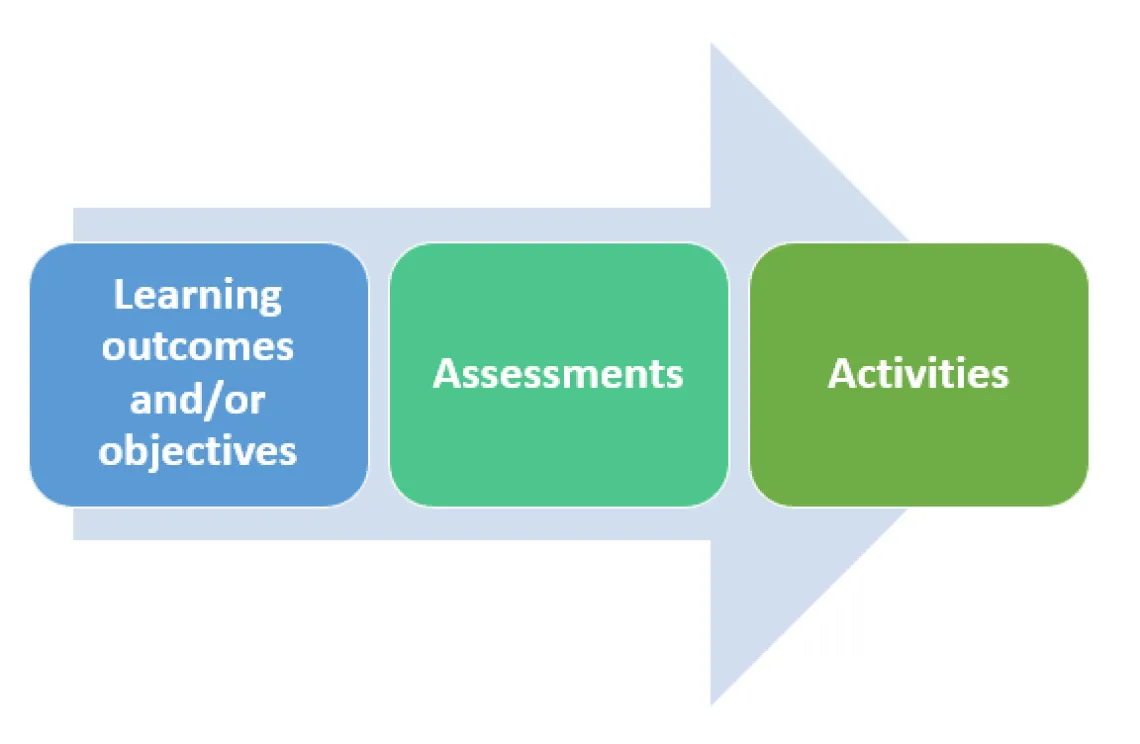Outcomes, Objectives, and Alignment Demystified
Student Learning Outcomes and Learning Objectives are the core aspects of alignment in course design, but how do you tell them apart?

Student Learning Outcomes and Learning Objectives are the backbone of a well-designed course. They are also key components of alignment because they impact almost every aspect of course design, structuring the learning process. The problem is that these terms are not used consistently in the field of education. One term is generally recognized as a teacher-focused pedagogical goal, which can be less focused and specific, and perhaps not always measurable. The other is used to denote specific, precise, measurable actions that the students will perform to prove that they have achieved the pedagogical goal. This causes confusion over how they are defined and used during course development. In the following paragraphs, I’ll attempt to define and distinguish each term.
Outcomes, Objectives, and Alignment
In the Backwards Design approach to course development, you begin with the end in mind, meaning that you define what students should know and be able to do at the end of the course or module before you develop it. The first step is to define learning outcomes and/or objectives, performance indicators which reflect learning goals. Next comes the assessments that demonstrate those performance indicators. After defining course assessments, you are ready to create learning activities that lead students toward successful performance in those assessments. In this way, Backwards Design ensures that outcomes, assessments, learning activities, and instructional content are all aligned within a course.

What exactly are Learning Objectives?
Learning objectives are teacher-centered goals for student learning which describe what the teacher does to help students achieve knowledge or skills. Learning objectives may or may not be measurable, and they are often linked to an instructor’s teaching philosophy or style. You can imagine objectives as a roadmap which describes the path toward the learning goals. They are generally less broad than learning goals and broader than student learning outcomes. A well-constructed learning objective consists of three main parts:
- the condition, which explains the context in which the learning occurs;
- the performance, which (similar to a learning outcome) explains what students will be able to do when they have met the condition;
- the assessment, which shows that learning has occurred.
An example objective is written and deconstructed below, according to each main part:
- Example Learning Objective: After watching an interactive lecture video series on the history of the Civil War, learners will analyze the progression of the conflict by scoring 75% or higher on an essay exam.
- Deconstructed Learning Objective: [condition: After watching an interactive lecture video series on the history of the Civil War,] [performance: learners will analyze the progression of the conflict] [assessment: by scoring 75% or higher on an essay exam.]
What exactly are Learning Outcomes?
Learning outcomes, on the other hand, are succinct, student-centered actions that demonstrate learning. At the University of Arizona, learning outcomes refer to specific, measurable actions that a student will be able to perform after a unit of instruction (e.g., an activity, lesson, module, or course). They are written from the students’ perspective and describe what students will be able to do (not just understand) after a unit of learning. Outcomes are constructed using Bloom’s Taxonomy verbs, which are measurable verbs that express higher-level cognitive skills. Outcomes have one main verb, meaning that they only describe one discrete action. Module level outcomes provide scaffolding toward course level outcomes. Using the same example that was provided for the learning objective, an outcome might look like this:
- Example Learning Outcome: By the end of this course, you will be able to analyze the progression of the conflict that led to the Civil War.
Outcomes & Objectives
Learning Outcomes and Learning Objectives can exist in symbiosis because they work toward the same pedagogical goals. However, each is constructed differently and serves different purposes within the course. While Learning Objectives provide the full story of how the learning will occur, Learning Outcomes focus on the specific actions that benchmark this learning. Also, the Quality Matters review focuses on the measurable, specific, student-centered action, which at the University of Arizona, is the learning outcome rather than the learning objective.


